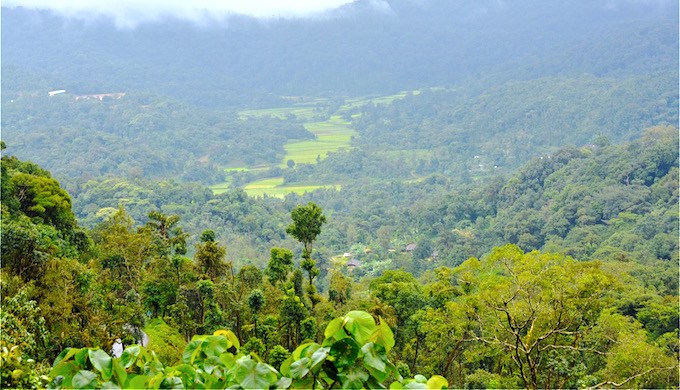Coffee grows naturally in shady places, thus making it an ideal form of agroforestry that can maintain significant biodiversity.
But in the 1970s, taking a simplistic “money is the only thing that matters” approach, the World Bank and the United Stated Agency for International Development (USAID) funded the development of sun-tolerant coffee trees in order to help farmers boost output. It did that, but millions of acres of forest were cut down as a result, devastating wildlife populations worldwide.
As a result, non-profits, foundations, and ethical businesses have long been promoting the restoration of shade-grown (often called “bird-friendly”) coffee. These beans–especially when organic–sell for significantly higher prices, enabling fair-trade groups to pay the farmers more, thus giving them a financial incentive to restore their land.
To its credit, USAID realized its mistake, and has joined this effort to replace sun-tolerant trees with natural shade-oriented trees worldwide.
Now, farmers in Kodagu, India have found a way to further boost their incomes by combining two synergistic products: coffee and honey. The bees needed for honey production boost pollination of all their other crops.
The project for promoting bee farming (apiculture) in coffee estates was started after a study found the strong economic impact of pollination services of bees from sacred groves adjacent to the coffee farms. Kodagu has 1,214 sacred groves under community management, covering 2,550 hectares interspersed with coffee estates.
While Arabica coffee is self-pollinated, Robusta is cross-pollinated. “We researched the interaction between bees in the sacred groves and Robusta coffee to understand what the pollination impact is,” said C.G. Kushalappa, university head for forestry and environment sciences at the College of Forestry in Ponnampet. “Our research proved that in Robusta close to 31% of productivity could be increased if there is sufficient population of honeybees around the farm.”
This research, implemented by the College of Forestry under the Managing Trade-Offs in Coffee Agroforestry (MOCA) project in partnership with ETH University at Zurich, Switzerland, opened the possibility of increasing income for coffee farmers by integrating apiculture into coffee systems.
“Kodagu honey has a premium in the market because it comes from the flowers of multiple species,” said R.N. Kencharaddi, assistant professor of agricultural entomology at the College of Forestry at Ponnampet, Kodagu, India. “Honey collected from bee keeping in coffee agro-forestry system can get the premium price.”
Photo credit: S. Gopikrishna Warrier
See full article by S. Gopikrishna Warrier in India Climate Dialogue

